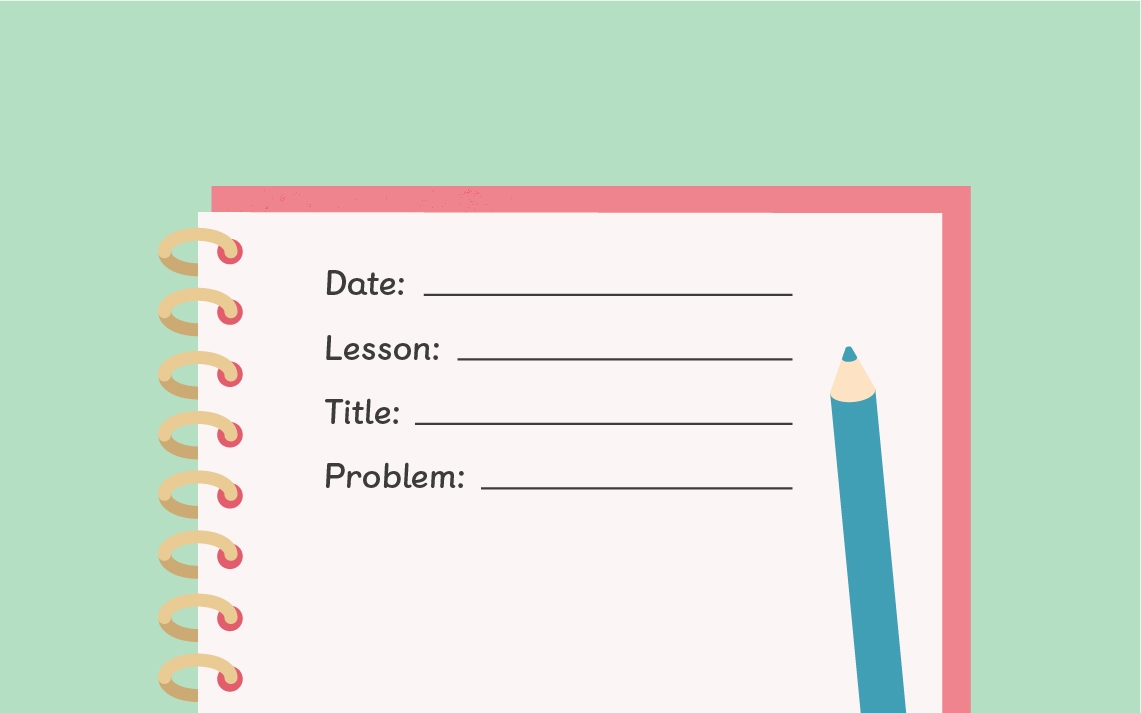4 reasons why your maths students should be journalling
Editor’s Note:
This is an updated version of a blog post originally published on June 5, 2018
As I continue to guide my students on the path to maths mastery, I’ve come to realise that journalling can be a potent tool. It leads to flexible thinking, and encourages the use of precise mathematical vocabulary in learners.
The power of asking mathematics students to journal cannot be understated as it plays a big part in improving learners’ attainment and progress.
Here are some key reasons to start journalling:
1. Keep students engaged in their learning
Every teacher can recognise the challenge of keeping students focused throughout a lesson.
Journalling helps pupils focus on their learning and take ownership of it. By providing opportunities to record or reflect at different points in the lesson, learners begin to shift the focus from the ‘how’ of mathematics (what tasks to perform), to the ‘why’ (reflecting on their own understanding). This keeps them engaged, as they are not performing repetitive tasks by rote. Instead, they’ll gain a deep understanding of concepts by recording their learning in their own words.
Why not try it, and see how it goes? Keep the emphasis placed on thinking which ultimately leads to better learning outcomes. It’s been my experience that learners respond well to opportunities to be expressive and creative, and journalling seems to help deepen their understanding.
2. Help students self-assess and understand their own learning
An essential component of journalling is freedom: students should feel free to use models and images, and openly reflect on their own struggles, mistakes and successes as a learner. The result? Students will steadily develop a strong sense of metacognition — the ability to understand how they learn as individuals.
In my Year 6 class, we asked learners to reflect on how a statement wasn’t true in their journals. This reflection took place a week after the original lesson had taken place. The learners were asked to provide six different ways that proved the statement untrue using words, algorithms, drawings and models.

The learners enjoyed the opportunity for reflection and self-assessment. It provided a clear window into what they understood, and how they were making sense of the concepts by building on prior understanding or knowledge. In this example, the learner shows a clear understanding of equivalent fractions, and a sound conceptual understanding of the relative sizes of fractions when comparing. They attempted to use models and images to support their conjectures, however, it was clear that further practise in this area was required.
Transform Your Maths Assessment
Insights — our online assessment tool — gives you instant, powerful data to identify gaps and improve results.

3. Develop higher level thinking skills in students
In my own teaching practice, I often consider the purpose of a journal on any given day.
Will it help me with assessment? Or is it simply a chance for students to explore newly introduced concepts?
For me, when I encourage journalling in a lesson changes all the time. It is the goal of the lesson that dictates when I give a journal exercise, and what form it takes. By helping learners articulate their thinking verbally (whether in whole-class teaching, in groups or as they engage in reflective learning activities), I can prepare them to record their understanding in their written journals. I’ve noticed that they learn not only the process of mathematics, but also develop higher level thinking skills in this way that help them think like a mathematician.
When encouraging deep-level thinking skills why not try to get students to think about some of the following when journalling:
“I knew I was right when……”
“The thing you must remember with this kind of problem is……..”
“Tips I would give a friend to solve this problem are………”
“I wish I knew more about……”
“Could you have found the answer by doing something different? What?”
“Were you frustrated with this problem? Why or why not?”
“What method did you use to solve this problem and why?”
4. Help teachers assess individual strengths and needs
Journals help learners communicate their knowledge about mathematics, and how they feel about the learning environment they are in. That’s good news for students, but also great news for teachers! By reading journals, I can evaluate my learners’ progress and recognise their individual strengths and needs.
In this Year 5 lesson, learners were asked to reflect on what they had noticed about the relationship between equivalent fractions. The skills needed were multiplication and division. The following example is an entry from a struggling learner who could make the connection with equivalence within the 2 and 3 times tables. The learner attempted to relay their understanding of the concept using a diagram, the bar model.

It was clear that while this learner was attempting to relay their understanding using an image or model, they lacked the conceptual understanding required about fractions in order to progress further in the learning. Based on this, a same day intervention was scheduled to work with a small group of children using concrete materials to build their conceptual understanding of fractions.
There are many ways to motivate learners to journal: problem solving, process prompts, language experience or class discussion. Whatever method you use, you’ll start to see that journalling builds a strong foundation for maths mastery.
